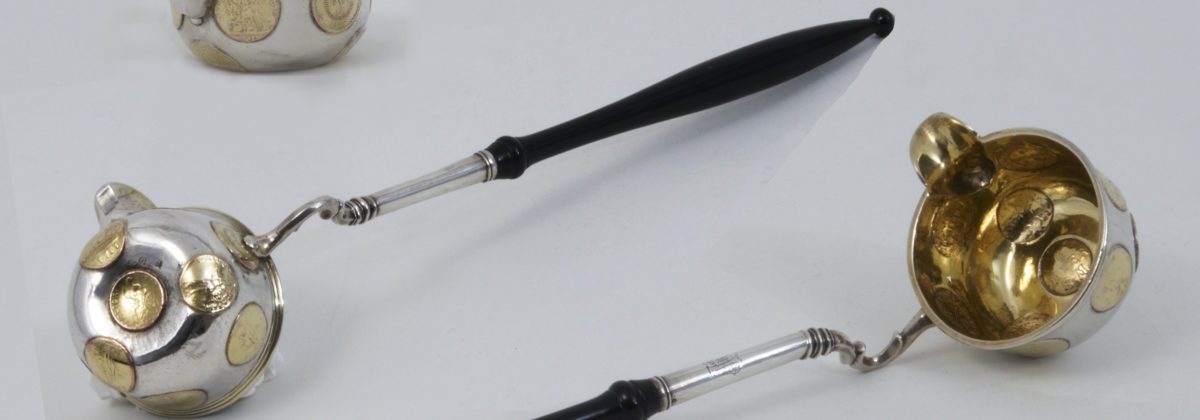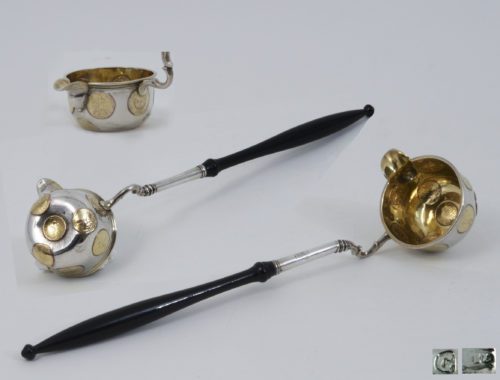Object Number: #348
Güstrow, ca. 1720
Caspar Johann Livonius
City’s hallmark: a „G“ in a shield for Güstrow (Scheffler 1980, nr. 153)
Maker’s mark: monogram „CIL“ in an oval shield with four profiled edges for Caspar Johann Livonius (Scheffler 1980, Nr. 183)
Length: 41 cm (8,6 in.); weight: 222 gr.
Detailed Information
A Rare Silver Parcel Gilt Coin-Ladle
This silver, partly-gilt ladle decorated with inset coins is a rare object from Güstrow of the early eighteenth century. The deep, round bowl is silver, embossed and cast and is gilt inside. The ladle has a profiled rim and a mounted serving spout. The walls of the corpus are decorated with gilt cooper Swedish coins, dated between 1715 and 1718. It has an ebonised handle and a smaller silver base with a later monogram engraving. The accurate execution and the nice colouring of silver, gold and copper-colour details add to the elegance of this object.
Historical Background
The ladle is a typical object of the eighteenth century. It was particularly developed due to its function as serving equipment to escort tureens. Ladles were also used for serving punch, which was introduced in Germany since the seventeenth century.
Frederick William I, Duke of Mecklenburg-Schwerin (1675-1713) became involved in a violent succession dispute with his uncle Adolf Frederick II, Duke of Mecklenburg-Strelitz (1658-1708), which brought the land on the brink of a civil war. This dispute ended in 1701 by the Hamburg Compromise, which split Mecklenburg into two parts, sub-principalities, with limited autonomy. Frederick William I took also part into the Great Northern War (1700-21).
The fixed coins on the corpus of the ladle should have the function of adornment and on the same time of a commemoration object of this last dreadful war. They must have been closely linked to the life experiences of the client who ordered it.
Maker
Caspar Johann Livonius was born circa 1707. He was gold- and silversmith. He died on 8th January 1787. Many of his works of church silver are in churches in Schwerin, Güstrow and the actual Mecklenburg-Western Pomerania.
Literature
Scheffler, Wolfgang, Goldschmiede Mittel- und Nordostdeutschlands: Von Wernigerode bis Lauenburg in Pommern. Daten – Werke – Zeichen, Berlin-New York: De Gruyter, 1980



